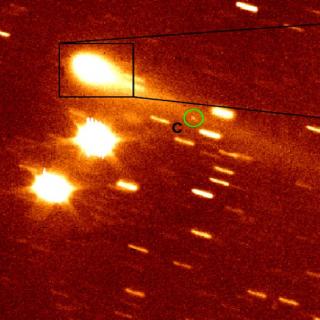Bibcode
Rodríguez Rodríguez, Javier; Díez Alonso, Enrique; Iglesias Álvarez, Santiago; Pérez Fernández, Saúl; Buendia Roca, Alejandro; Fernández Díaz, Julia; Licandro, Javier; Alarcon, Miguel R.; Serra-Ricart, Miquel; Pinilla-Alonso, Noemi; de Cos Juez, Francisco Javier
Bibliographical reference
Monthly Notices of the Royal Astronomical Society
Advertised on:
10
2024
Citations
1
Refereed citations
1
Description
In an attempt to further characterize the near-Earth asteroid (NEA) population, we present 38 new light curves acquired between 2020 September and 2023 November for NEAs (7335) 1989 JA, (7822) 1991 CS, (154244) 2002 KL6, and (159402) 1999 AP10, obtained from observations taken at the Teide Observatory (Tenerife, Spain). With these new observations along with archival data, we computed their first shape models and spin solutions by applying the light-curve inversion method. The obtained rotation periods are in good agreement with those reported in previous works, with improved uncertainties. Additionally, besides the constant period models for (7335) 1989 JA, (7822) 1991 CS, and (159402) 1999 AP10, our results for (154244) 2002 KL6 suggest that it could be affected by a Yarkovsky-O'Keefe-Radzievskii-Paddack acceleration with a value of $\upsilon \simeq -7\times 10^{-9}$ rad d$^{-2}$. This would be one of the first detections of this effect slowing down an asteroid.
Related projects

Small Bodies of the Solar System
This project studies the physical and compositional properties of the so-called minor bodies of the Solar System, that includes asteroids, icy objects, and comets. Of special interest are the trans-neptunian objects (TNOs), including those considered the most distant objects detected so far (Extreme-TNOs or ETNOs); the comets and the comet-asteroid
Julia de
León Cruz